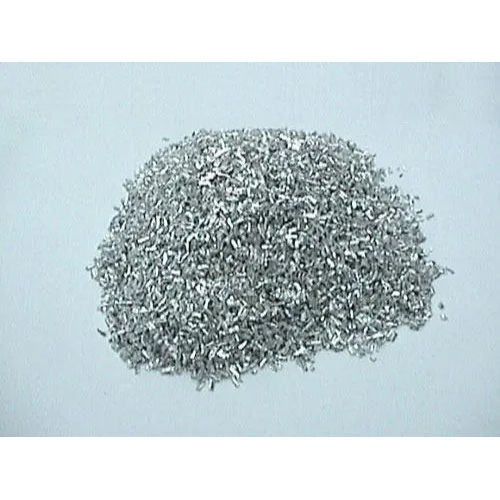Welcome to Our Company
Magnesium Metal Turning
250 INR/Kilograms
Product Details:
- Shelf Life 12 Months
- Grade Industrial Grade
- Purity 99%
- Storage Room Temperature
- Product Type MAGNESIUM METAL TURNING
- Application Industrial
- Physical Form Granule
- Click to View more
X
Magnesium Metal Turning Price And Quantity
- 25 Kilograms
- 250 INR/Kilograms
Magnesium Metal Turning Product Specifications
- 12 Months
- Industrial Grade
- 99%
- Room Temperature
- MAGNESIUM METAL TURNING
- Granule
- Industrial
Magnesium Metal Turning Trade Information
- Days
Product Description
Due to the reactive nature of the metal, it is crucial to exercise specific caution when working with magnesium metal turning. When exposed to an ignition source, such as sparks or heat, magnesium is highly flammable and rapidly ignites. It can also have a strong reaction with oxidising substances, acids, and water. As a result, it's essential to handle magnesium metal turnings in a controlled setting and to adhere to the necessary safety precautions. It includes a process of shaping or cutting magnesium metal into tiny. Usually, a lathe or another type of machining instrument is used to produce the turning.
FAQ:
Q. Is magnesium metal turning safe?
Ans: Magnesium metal turning can be hazardous due to magnesium's flammability. When machining magnesium, the generated chips and fines can ignite spontaneously, leading to fires or explo sions. It is essential to follow strict safety guidelines, provide proper ventilation, use fire suppression systems, and train operators to handle magnesium safely.
Q. Which industries commonly use magnesium metal turning?
Ans: Magnesium alloys are popular in industries such as aerospace, automotive, electronics, and medical devices due to their lightweight and high strength-to-weight ratio. Turning is commonly used to shape magnesium parts and components in these industries.
Q. What type of cutting tools is best for magnesium turning?
Ans: Carbide or high-speed steel cutting tools are commonly used for magnesium turning. These materials offer high hardness and wear resistance, which is essential for machining magnesium alloys effectively.
Tell us about your requirement

Price:
Quantity
Select Unit
- 50
- 100
- 200
- 250
- 500
- 1000+
Additional detail
Mobile number
Email









